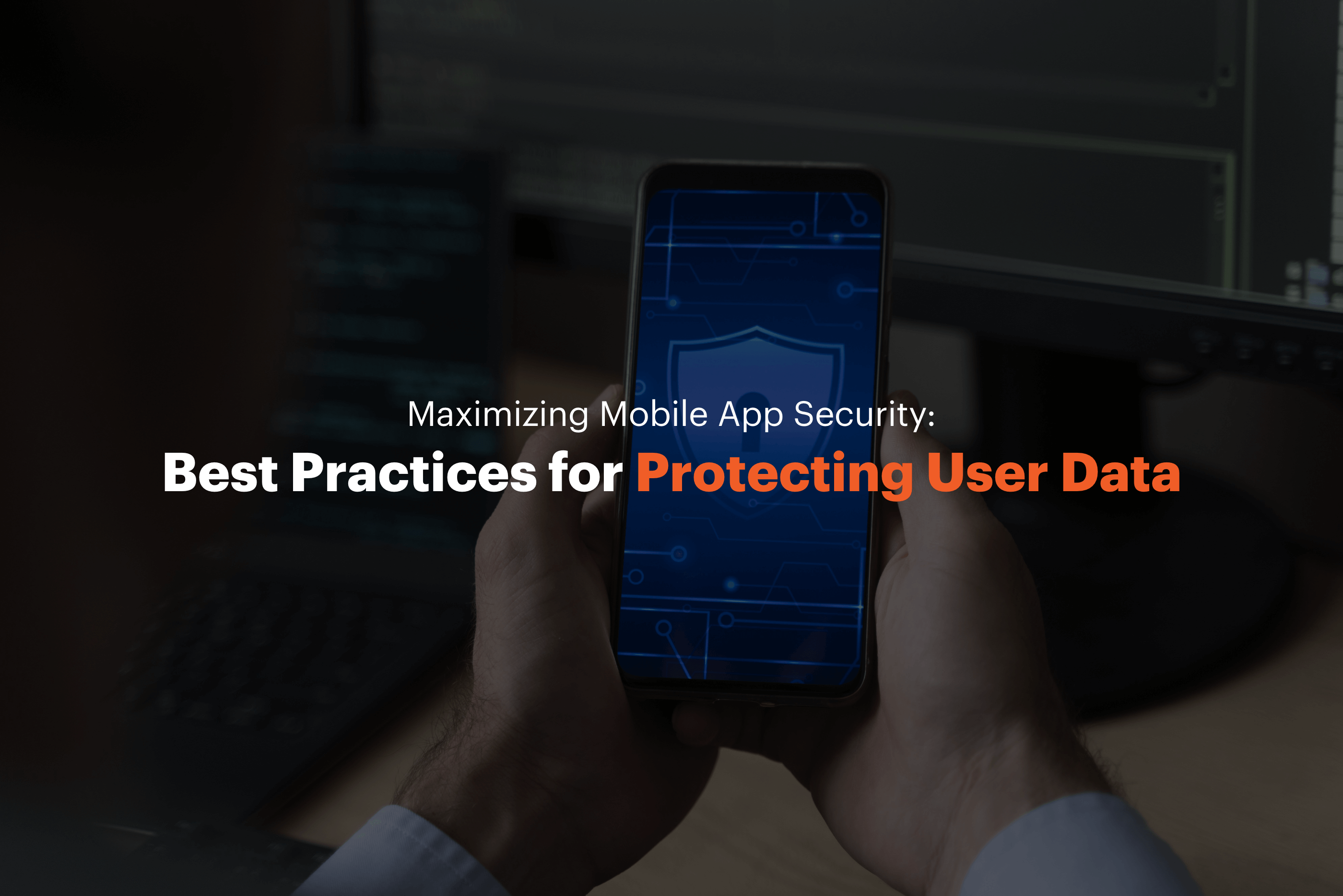Contact Us
If you have made it this far, you are here with a reason. You need our help! We are super friendly and genuinely care to help you succeed.
Enquire today to receive a FREE consultation with an App Guru.
Get in Touch
info [at] appgurus.com.au
In today's digital age, mobile apps are becoming an integral part of our lives, from online banking to social networking. However, with the rise of mobile apps comes an increased risk of data breaches and cyber-attacks. As a mobile app developer, it is essential to prioritize security to protect user data and prevent breaches. This blog post will provide some tips for building secure mobile apps that protect user data.
Use secure authentication
Secure authentication is essential to building a mobile app that protects user data. Here are some tips on how to implement secure authentication:
- Use strong passwords: Encourage users to create strong passwords that are at least 8-12 characters long and contain a mix of uppercase and lowercase letters, numbers, and symbols.
- Implement Two-Factor Authentication (2FA): Implement 2FA to add an extra layer of security to the authentication process. 2FA typically requires users to enter a unique code sent to their mobile device or email in addition to their password.
- Use Biometric Authentication: Use biometric authentication, such as fingerprint or facial recognition, as an alternative to passwords. This can improve security by making it more difficult for unauthorized users to access the app.
- Limit login attempts: Implement a lockout policy that locks out users after a certain number of failed login attempts to prevent brute force attacks.
- Use OAuth or OpenID Connect: Implement OAuth or OpenID Connect for authentication and authorization to enable users to log in using their social media credentials, such as Facebook or Google. This can improve user experience and security by not requiring users to create a new account and password.
- Encrypt user credentials: Encrypt user credentials when transmitting over the network or storing them on the device to protect them from unauthorized access.
Encrypt data
Encryption is critical in building secure mobile apps that protect user data. Encryption involves encoding data so that it can only be read by those with the appropriate key or password. By encrypting user data, you can ensure that it remains secure and protected from unauthorized access.
To implement data encryption in your mobile app, you should use HTTPS to encrypt data in transit between the app and the server. This will prevent attackers from intercepting data and reading it. Additionally, you should encrypt data at rest, meaning when it's stored on the device, to prevent unauthorized access in case the device is lost or stolen.
Using robust encryption algorithms, such as AES, and secure key management practices, will ensure that the data is protected from brute-force attacks and that encryption keys are kept secure. It's also essential to consider encrypting backups and sensitive data within the app, such as user credentials and credit card information.
By implementing encryption measures, you can ensure that user data is protected both in transit and at rest and that sensitive data is encrypted to prevent unauthorized access. In addition, this will help to build user trust and confidence in your app, which is essential for long-term success.
Implement secure communication
Secure communication is crucial in building mobile apps that protect user data. Secure communication ensures that data transmitted between the app and server is encrypted and protected from interception by unauthorized third parties. Here are some tips on implementing secure communication in your mobile app:
- Use HTTPS to encrypt data transmission between the app and the server. HTTPS encrypts all data in transit and protects against man-in-the-middle attacks.
- Use SSL/TLS to secure communication channels. SSL/TLS provides secure encryption for data transmission and protects the data from eavesdropping and tampering.
- Use certificate pinning to protect against man-in-the-middle attacks. Certificate pinning ensures that the app only connects to the server with the expected certificate, protecting against fraudulent certificates.
- Implement security headers to protect against attacks such as cross-site scripting (XSS) and cross-site request forgery (CSRF).
- Regularly update security protocols and libraries to ensure your app uses the latest security measures.
By implementing secure communication, you can ensure that user data is protected from interception and unauthorized access and help to build user trust and confidence in your app. In addition, regularly updating your security protocols and libraries will help ensure that your app uses the latest and most secure technology.
Keep the app up-to-date
Keeping your mobile app up-to-date is crucial in maintaining security and protecting user data. Regular updates ensure that your app uses the latest security measures and addresses any vulnerabilities or bugs that may have been identified. Here are some reasons why you should keep your app up-to-date:
Security: Regular updates help ensure that your app uses the latest security measures and protects against emerging threats and vulnerabilities.
Bug fixes: Updates can address bugs or issues identified since the previous release, ensuring the app functions smoothly and reliably.
Compatibility: Updates can ensure that your app is compatible with the latest operating systems and devices, improving user experience and accessibility.
Performance: Updates can improve app performance, speed, and stability, enhancing user satisfaction and engagement.
By keeping your app up-to-date, you can ensure that user data is protected from emerging threats and vulnerabilities and that your app functions smoothly and reliably. In addition, this helps to build user trust and confidence in your app, which is essential for long-term success.
Limit access to user data
Limiting access to user data is essential to building secure mobile apps that protect user data. Only authorized users and processes should be able to access and modify user data. This can be achieved by implementing access controls, such as user authentication, role-based access control, and permissions. Limiting access to user data can prevent unauthorized access, data theft, and data misuse. In addition, this helps to build user trust and confidence in your app, which is crucial for maintaining long-term success.
Use a secure backend
A secure backend is crucial in building mobile apps that protect user data. It is responsible for storing, processing, and transmitting user data securely. A secure backend should implement strong encryption protocols, have robust access controls, and undergo regular security audits to prevent unauthorized access, data theft, and data misuse. Additionally, it should use secure communication protocols, such as HTTPS, to encrypt data in transit between the app and the server. Using a secure backend ensures that user data is protected from emerging threats and vulnerabilities and helps to build user trust and confidence in your app. Regularly updating your backend security protocols and libraries can also ensure that your app uses the latest and most secure technology. By using a secure backend, you can ensure that user data is safe and secure and help ensure your app's long-term success.
Test the app for security vulnerabilities
Testing your mobile app for security vulnerabilities is critical in building secure mobile apps that protect user data. It helps to identify and address any security weaknesses or vulnerabilities in the app before it is released to users. There are several types of security testing that you can perform on your app, including penetration testing, vulnerability scanning, and code review.
Penetration testing involves simulating a cyber attack on your app to identify potential weaknesses in the system. Vulnerability scanning involves using automated tools to scan the app for known vulnerabilities. Finally, code review examines the app's source code for security vulnerabilities.
By testing your app for security vulnerabilities, you can identify and address any weaknesses or vulnerabilities before cybercriminals can exploit them. This can help to protect user data and build trust and confidence in your app. Regularly testing your app for security vulnerabilities is essential, as new threats and vulnerabilities always emerge.
Follow security best practices
Adhering to best practices for mobile app security is essential in developing secure apps that protect user data. Two crucial best practices are the OWASP Mobile Top 10 and GDPR compliance.
The OWASP Mobile Top 10 lists the top ten most critical security risks for mobile apps, including issues such as insecure data storage, inadequate authentication, and insecure communication. By adhering to these best practices, developers can ensure that their app is built with security in mind and reduce the risk of data breaches.
GDPR (General Data Protection Regulation) is a regulation that aims to protect the privacy and personal data of EU citizens. It requires that apps collecting personal data obtain explicit consent from users and provide them with clear and concise privacy policies. GDPR compliance also requires that apps implement strong security measures to protect user data from unauthorized access or theft.
By adhering to these best practices, developers can ensure that their app is secure and compliant with necessary regulations. This can build user trust and confidence in the app, increasing user adoption and long-term success. However, it is essential to note that these best practices are partial. Developers should also stay up-to-date with emerging threats and vulnerabilities and implement best practices accordingly.
In conclusion, building secure mobile apps that protect user data requires a proactive approach to security. By implementing strong authentication and access control mechanisms, using encryption, testing for vulnerabilities, keeping the app up-to-date, using a secure backend, following best practices, and adhering to essential regulations, developers can build apps that protect user data and build user trust and confidence. It is important to note that security is an ongoing process, and developers should stay up-to-date with emerging threats and vulnerabilities and implement best practices accordingly. By prioritizing security, developers can create mobile apps that are functional but also secure and trustworthy, leading to long-term success and user satisfaction.


